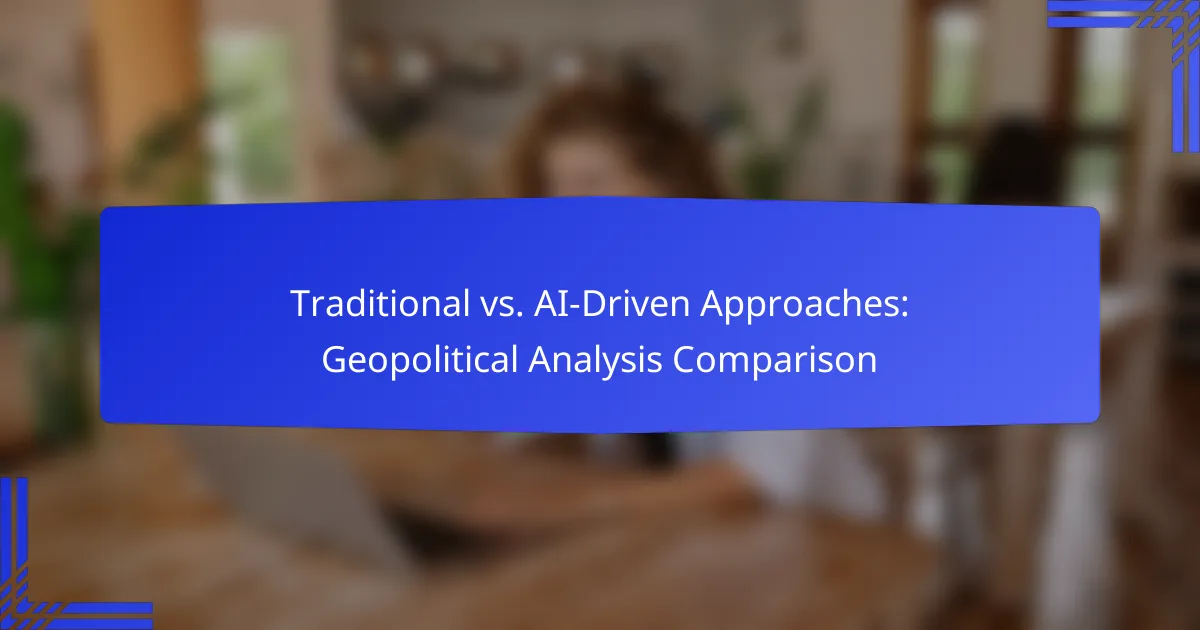In the realm of geopolitical analysis, traditional methods depend heavily on human expertise and historical context, whereas AI-driven approaches utilize sophisticated algorithms and extensive datasets to derive insights. This shift highlights significant differences in data processing speed, analytical precision, and the ability to adapt to emerging trends, ultimately transforming how decisions are made in the geopolitical landscape.
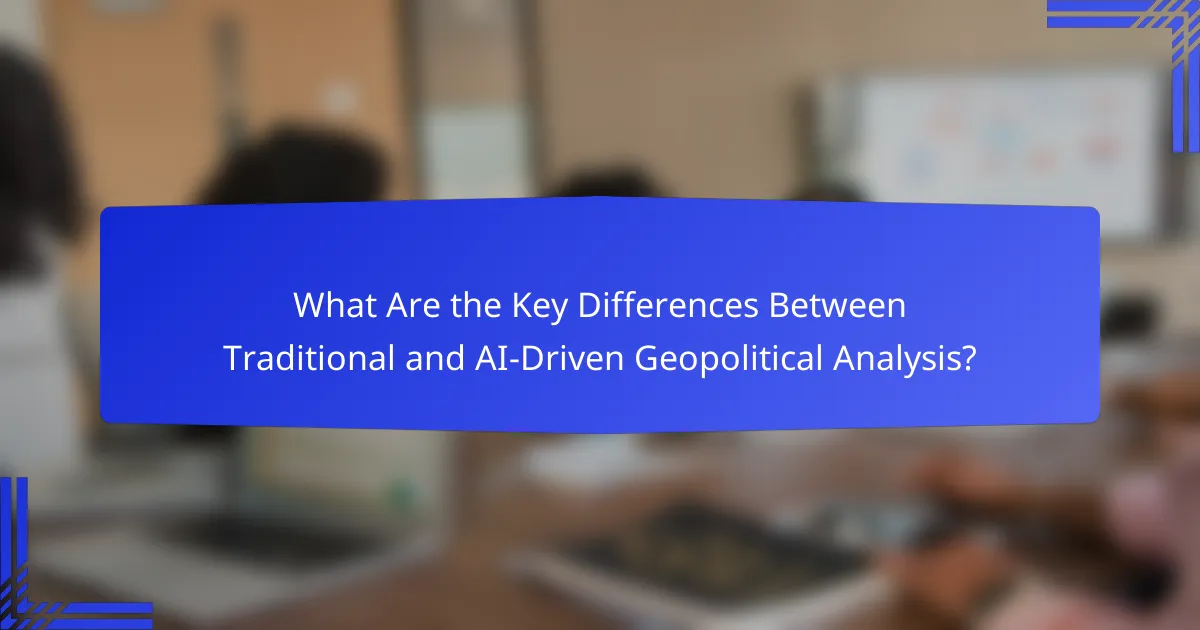
What Are the Key Differences Between Traditional and AI-Driven Geopolitical Analysis?
Traditional geopolitical analysis relies on human expertise and historical data, while AI-driven analysis leverages advanced algorithms and vast datasets for insights. The key differences lie in data processing speed, analytical accuracy, cost-effectiveness, scalability, and human oversight requirements.
Data processing speed
AI-driven geopolitical analysis significantly outpaces traditional methods in data processing speed. While human analysts may take hours or days to sift through reports and data, AI systems can analyze vast amounts of information in seconds or minutes. This rapid processing allows for timely insights, crucial in fast-evolving geopolitical situations.
For example, AI can quickly aggregate and analyze social media trends, satellite imagery, and news articles, providing real-time updates on geopolitical events. Traditional methods may lag, potentially missing critical developments.
Analytical accuracy
AI-driven analysis often achieves higher analytical accuracy due to its ability to identify patterns and correlations that may elude human analysts. Machine learning algorithms can continuously improve their accuracy by learning from new data, whereas traditional analysis relies on static knowledge and experience.
However, the quality of AI insights depends on the data quality and the algorithms used. Poor data can lead to misleading conclusions, making it essential to ensure robust data sources and validation processes.
Cost-effectiveness
AI-driven geopolitical analysis can be more cost-effective in the long run compared to traditional methods. While initial investments in technology and training may be high, the reduced need for extensive human resources and faster analysis times can lead to significant savings.
Organizations may find that using AI tools allows them to allocate resources more efficiently, focusing human analysts on strategic decision-making rather than data processing. This shift can enhance overall productivity and reduce operational costs.
Scalability
AI-driven approaches offer superior scalability compared to traditional analysis. As geopolitical issues grow in complexity and volume, AI systems can easily scale to handle increased data without a proportional increase in human resources.
This scalability means organizations can expand their analytical capabilities to cover more regions or issues without the need for significant additional investment in personnel. Traditional methods, on the other hand, may struggle to keep pace with growing demands.
Human oversight requirements
While AI can automate many aspects of geopolitical analysis, human oversight remains crucial. AI systems can generate insights, but human analysts are needed to interpret results, provide context, and make strategic decisions based on those insights.
Organizations should ensure a balance between AI capabilities and human expertise, as over-reliance on AI can lead to blind spots. Regular reviews and validations of AI outputs by experienced analysts can help maintain accuracy and relevance in geopolitical assessments.
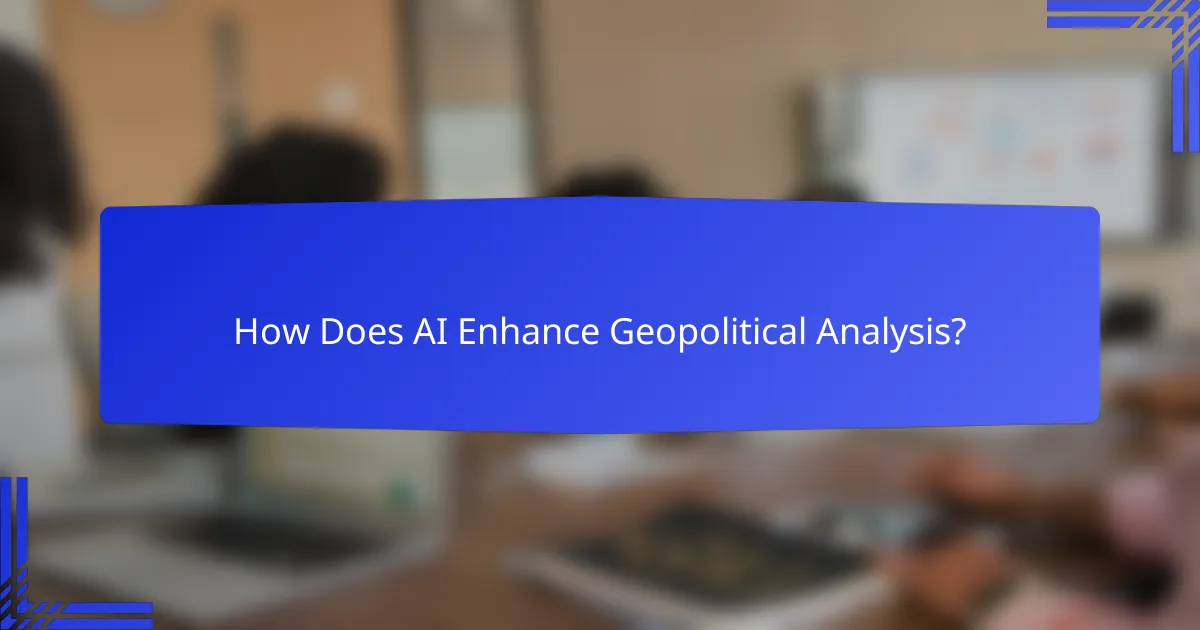
How Does AI Enhance Geopolitical Analysis?
AI enhances geopolitical analysis by providing advanced tools for data processing, predictive insights, and real-time monitoring. These capabilities enable analysts to make informed decisions based on vast amounts of information and emerging trends.
Predictive modeling capabilities
AI-driven predictive modeling uses historical data and machine learning algorithms to forecast geopolitical events. By analyzing patterns and trends, these models can estimate the likelihood of conflicts, economic shifts, or diplomatic changes.
For instance, a model might predict the potential for unrest in a region based on social media activity, economic indicators, and historical precedents. Analysts can use these predictions to allocate resources or adjust strategies proactively.
Real-time data integration
AI facilitates real-time integration of diverse data sources, including news articles, social media, and satellite imagery. This capability allows analysts to monitor developments as they occur, providing a comprehensive view of the geopolitical landscape.
For example, during a crisis, AI can aggregate information from various platforms to deliver timely updates, enabling decision-makers to respond swiftly. This integration helps in identifying emerging threats or opportunities that may not be visible through traditional analysis methods.
Sentiment analysis
Sentiment analysis employs natural language processing to gauge public opinion and sentiment regarding geopolitical issues. By analyzing social media posts, news articles, and other text sources, AI can identify prevailing attitudes and potential shifts in public perception.
This analysis can be crucial for understanding the potential impact of political decisions or international relations. For example, if sentiment turns negative towards a government policy, it may indicate a risk of civil unrest or political instability, prompting preemptive measures.
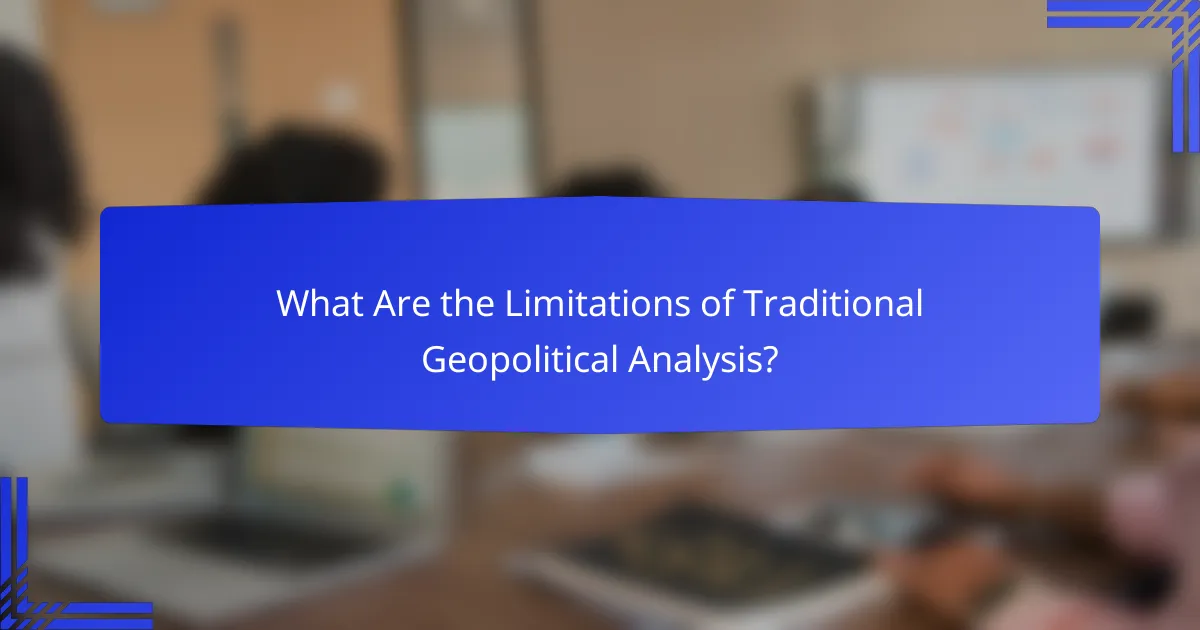
What Are the Limitations of Traditional Geopolitical Analysis?
Traditional geopolitical analysis often suffers from several limitations that can hinder its effectiveness. These include time-consuming processes, subjective interpretations, and a reliance on limited data sources, all of which can lead to incomplete or biased conclusions.
Time-consuming processes
Traditional geopolitical analysis typically involves extensive research, including gathering information from various reports, articles, and expert opinions. This can take weeks or even months, especially when analyzing complex geopolitical situations. The lengthy nature of these processes can delay decision-making, making it challenging for policymakers to respond swiftly to emerging issues.
To streamline this, analysts should prioritize key sources and focus on high-impact areas. Utilizing frameworks or checklists can help in organizing thoughts and speeding up the analysis. However, rushing through the process can lead to oversights, so balance is crucial.
Subjectivity in interpretation
One major limitation of traditional geopolitical analysis is the inherent subjectivity in interpreting data and events. Analysts often bring their biases, perspectives, and experiences into their assessments, which can skew the conclusions drawn. This subjectivity can lead to inconsistent analyses, making it difficult to reach a consensus on critical geopolitical issues.
To mitigate this, analysts should strive for transparency in their methodologies and consider multiple viewpoints. Engaging in peer reviews or collaborative analysis can help reduce individual biases and enhance the overall reliability of the findings.
Limited data sources
Traditional approaches often rely on a narrow range of data sources, such as government reports, academic papers, and news articles. This limitation can result in a skewed understanding of geopolitical dynamics, as important insights from alternative sources, such as social media or local news, may be overlooked.
Expanding data sources can significantly enhance analysis quality. Analysts should incorporate diverse perspectives and utilize technology to access real-time information. However, care must be taken to evaluate the credibility of new sources to avoid misinformation.
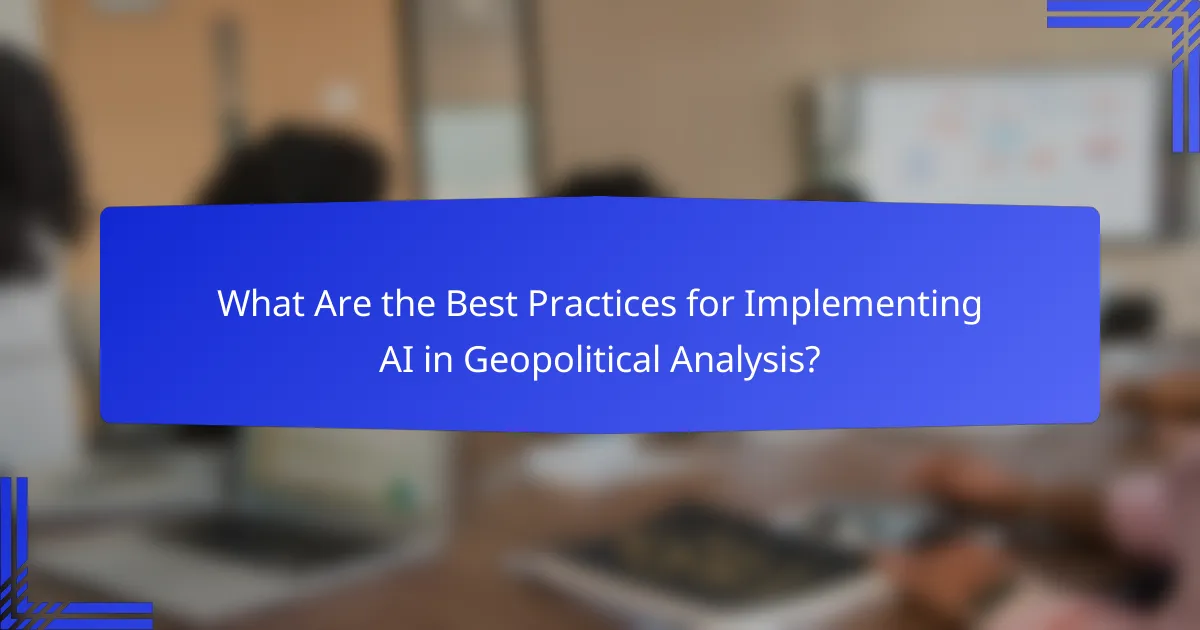
What Are the Best Practices for Implementing AI in Geopolitical Analysis?
Implementing AI in geopolitical analysis requires a strategic approach that emphasizes algorithm selection, data integration, and data quality. These best practices ensure that AI tools provide accurate and actionable insights for decision-making.
Choosing the right algorithms
Selecting appropriate algorithms is crucial for effective AI-driven geopolitical analysis. Algorithms such as natural language processing (NLP) and machine learning models can help identify patterns and trends in large datasets. Consider the specific needs of your analysis, such as predictive capabilities or real-time processing, when choosing algorithms.
Common choices include supervised learning for classification tasks and unsupervised learning for clustering data. A blend of algorithms may be necessary to address various analytical challenges, so evaluate the strengths and weaknesses of each option.
Integrating diverse data sources
Integrating a variety of data sources enhances the robustness of geopolitical analysis. Sources may include social media feeds, news articles, satellite imagery, and economic data. The diversity of data helps create a more comprehensive view of geopolitical events and trends.
Utilize APIs and data pipelines to streamline the integration process. Ensure that the data sources are relevant and up-to-date, as outdated information can lead to inaccurate conclusions. A combination of quantitative and qualitative data often yields the best insights.
Ensuring data quality
Data quality is paramount in AI-driven geopolitical analysis. High-quality data leads to more reliable outcomes, while poor data can skew results. Implement data validation processes to check for accuracy, completeness, and consistency across datasets.
Regularly audit your data sources and update them as necessary. Establish guidelines for data collection and processing to maintain standards. Consider using data cleaning tools to remove duplicates and correct errors, ensuring that your analysis is based on sound information.
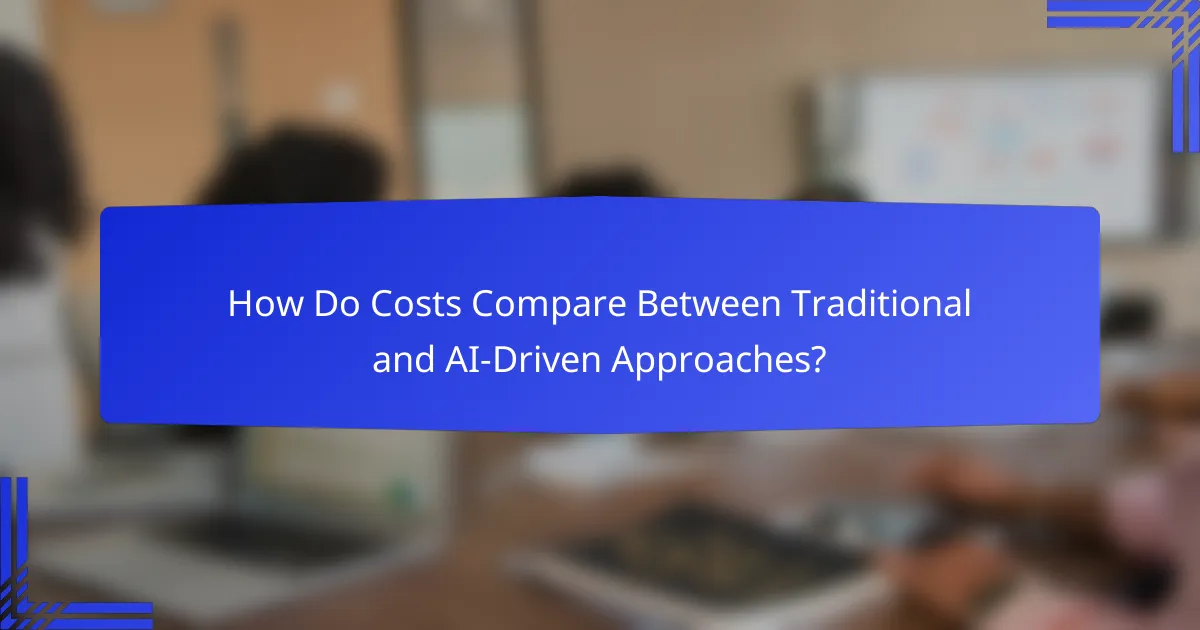
How Do Costs Compare Between Traditional and AI-Driven Approaches?
The costs associated with traditional and AI-driven approaches to geopolitical analysis can vary significantly. Traditional methods often involve extensive human resources and time, while AI-driven techniques can reduce costs through automation and efficiency.
Traditional Approaches: Cost Structure
Traditional geopolitical analysis typically relies on human analysts who gather, interpret, and report on data. This process can be labor-intensive, leading to high costs associated with salaries, training, and ongoing education. Additionally, the time required to produce reports can extend from weeks to months, further increasing expenses.
Costs can also include travel for field research, subscriptions to various data sources, and the use of specialized software. Overall, organizations may spend thousands to tens of thousands of USD annually on traditional analysis methods, depending on the scale and complexity of their needs.
AI-Driven Approaches: Cost Efficiency
AI-driven approaches leverage algorithms and machine learning to analyze vast datasets quickly and accurately. This automation significantly reduces the need for extensive human resources, leading to lower overall costs. Initial investments in AI technology may be high, but the long-term savings can be substantial.
Organizations can expect to see costs drop by a significant percentage, often in the range of 20-50%, when transitioning to AI-driven methods. Moreover, the speed of analysis can improve, with reports generated in hours instead of weeks, allowing for more timely decision-making.
Key Considerations for Cost Comparison
When comparing costs, consider the scale of the analysis required and the specific needs of your organization. AI-driven solutions may require upfront investment in technology and training, but they can lead to lower operational costs over time. Traditional methods may be more familiar but can become prohibitively expensive as the demand for rapid analysis grows.
It’s essential to evaluate the potential return on investment (ROI) for both approaches. Organizations should conduct a cost-benefit analysis to determine which method aligns best with their strategic goals and budget constraints.
